Groups joined
Discussions started
Discussion Comments
Resources added
Robin Sandfort added a new Discussion - "New model for Europe - AvesEcho" to Acoustics
Robin Sandfort added a new Discussion - "Waterproofing DIY VHF transmitter" to Animal Movement
Robin Sandfort contributed to Organisation - "Perdix Wildlife Supplies"
Robin Sandfort added a new Organisation - "Perdix Wildlife Supplies"
Groups
Group
- Latest Discussion
- Free online tool to analyze wildlife images
- Latest Resource
- /
- AI for Conservation Office Hours: 2025 Review
Read about the advice provided by AI specialists in AI Conservation Office Hours 2025 earlier this year and reflect on how this helped projects so far.
Group
- Latest Discussion
- Suggestions for research funds
- Latest Resource
- /
- AI for Conservation Office Hours: 2025 Review
Read about the advice provided by AI specialists in AI Conservation Office Hours 2025 earlier this year and reflect on how this helped projects so far.
Group
- Latest Discussion
- Free online tool to analyze wildlife images
- Latest Resource
- /
- AI for Conservation Office Hours: 2025 Review
Read about the advice provided by AI specialists in AI Conservation Office Hours 2025 earlier this year and reflect on how this helped projects so far.
Group
- Latest Discussion
- G-DiNC 2026: Global Drones in Nature Conservation Symposium & Expo
- Latest Resource
- /
- BoutScout – Beyond AI for Images, Detecting Avian Behaviour with Sensors
In this case, you’ll explore how the BoutScout project is improving avian behavioural research through deep learning—without relying on images or video. By combining dataloggers, open-source hardware, and a powerful BiLSTM deep learning model trained on temperature data, the team has reduced the time needed to analyse weeks or even months of incubation behaviour to just seconds. This has enabled the discovery of new patterns in how tropical birds incubate their eggs across different elevations and climates. With tools soon to be released on PyPI, including a no-code platform for behavioural analysis, this work offers a fresh, scalable approach for conservationists and researchers working on breeding data at the tropics.
Group
- Latest Discussion
- Apis Nomadica Labs: Mobile Bee-Search for the Future of Food & Medicine
- Latest Resource
- /
- Siguiendo Ballenas: rastreo satelital desde el espacio revela sus rutas migratorias // Tracking right whales from outer space reveals their migratory routes
Un ambicioso proyecto internacional está usando transmisores satelitales para monitorear los viajes migratorios de ballenas francas australes, permitiendo entender sus sorprendentes patrones de desplazamiento en tiempo real. // An ambitious international project is using satellite tags to monitor the migratory journeys of southern right whales, allowing researchers to understand their surprising movement patterns in real time.
Group
- Latest Resource
- /
- AI for Conservation Office Hours: 2025 Review
Read about the advice provided by AI specialists in AI Conservation Office Hours 2025 earlier this year and reflect on how this helped projects so far.
Group
- Latest Discussion
- DIY: Pressure Chamber
- Latest Resource
- /
- Can CBIs promote coexistence? A Case Study from Northern Tanzania
Can conservation-based incentives promote the willingness of local communities to coexist with wildlife? A case of Burunge Wildlife Management Area, Northern Tanzania
Group
- Latest Discussion
- Mothbox Documentary [Wildlabs Award 2024)
- Latest Resource
- /
- A new underwater camera trap for freshwater wildlife monitoring
Proud of sharing our paper introducing our underwater camera trap, a solution for automating the production of underwater images and videos of amphibians, reptiles, invertebrates, mammals...
Group
- Latest Discussion
- Online Ocean-Focused GIS Course
Group
- Latest Discussion
- How has the Funding & Finance group done?
- Latest Resource
- /
- AI for Conservation Office Hours: 2025 Review
Read about the advice provided by AI specialists in AI Conservation Office Hours 2025 earlier this year and reflect on how this helped projects so far.
Group
- Latest Discussion
- New Group Proposal: Systems Builders & PACIM Designers
- Latest Resource
- /
- Application of computer vision for off-highway vehicle route detection: A case study in Mojave desert tortoise habitat
Driving off-highway vehicles (OHVs), which contributes to habitat degradation and fragmentation, is a common recreational activity in the United States and other parts of the world, particularly in desert environments with fragile ecosystems. Although habitat degradation and mortality from the expansion of OHV networks are thought to have major impacts on desert species, comprehensive maps of OHV route networks and their changes are poorly understood. To better understand how OHV route networks have evolved in the Mojave Desert ecoregion, we developed a computer vision approach to estimate OHV route location and density across the range of the Mojave desert tortoise (Gopherus agassizii). We defined OHV routes as non-paved, linear features, including designated routes and washes in the presence of non-paved routes. Using contemporary (n = 1499) and historical (n = 1148) aerial images, we trained and validated three convolutional neural network (CNN) models. We cross-examined each model on sets of independently curated data and selected the highest performing model to generate predictions across the tortoise's range. When evaluated against a ‘hybrid’ test set (n = 1807 images), the final hybrid model achieved an accuracy of 77%. We then applied our model to remotely sensed imagery from across the tortoise's range and generated spatial layers of OHV route density for the 1970s, 1980s, 2010s, and 2020s. We examined OHV route density within tortoise conservation areas (TCA) and recovery units (RU) within the range of the species. Results showed an increase in the OHV route density in both TCAs (8.45%) and RUs (7.85%) from 1980 to 2020. Ordinal logistic regression indicated a strong correlation (OR = 1.01, P < 0.001) between model outputs and ground-truthed OHV maps from the study region. Our computer vision approach and mapped results can inform conservation strategies and management aimed at mitigating the adverse impacts of OHV activity on sensitive ecosystems.
Group
- Latest Discussion
- Free online tool to analyze wildlife images
- Latest Resource
- /
- IUCN Red list R client.
Everything you need on the IUCN Red list is now accessible from R, outputted as tibble to facilitate data query, analysis, and visualization.
Group
- Latest Resource
- /
- Nature Tech for Biodiversity Sector Map launched!
Conservation International is proud to announce the launch of the Nature Tech for Biodiversity Sector Map, developed in partnership with the Nature Tech Collective!
Group
- Latest Resource
- /
- BoutScout – Beyond AI for Images, Detecting Avian Behaviour with Sensors
In this case, you’ll explore how the BoutScout project is improving avian behavioural research through deep learning—without relying on images or video. By combining dataloggers, open-source hardware, and a powerful BiLSTM deep learning model trained on temperature data, the team has reduced the time needed to analyse weeks or even months of incubation behaviour to just seconds. This has enabled the discovery of new patterns in how tropical birds incubate their eggs across different elevations and climates. With tools soon to be released on PyPI, including a no-code platform for behavioural analysis, this work offers a fresh, scalable approach for conservationists and researchers working on breeding data at the tropics.
Group
- Latest Discussion
- Online Ocean-Focused GIS Course
- Latest Resource
- /
- AI for Conservation Office Hours: 2025 Review
Read about the advice provided by AI specialists in AI Conservation Office Hours 2025 earlier this year and reflect on how this helped projects so far.
Group
- Latest Discussion
- Free online tool to analyze wildlife images
- Latest Resource
- /
- IUCN Red list R client.
Everything you need on the IUCN Red list is now accessible from R, outputted as tibble to facilitate data query, analysis, and visualization.
Bookmarks
Keep track of the resources that matter to you! Collections let you save, organise, and share content from all over the WILDLABS community. Create your first collection by clicking on the bookmark icon wherever you see it.
My Courses
These are your in-progress and completed courses. Explore more courses through our catalogue.
To find courses you have created, see your "My Draft Content" or "My Content" tabs.
Settings
Robin Sandfort's Content
Discussion
Hi there,did anyone already compare results between AvesEcho v1 and BirdNET?This European model is now used on mystery call in xeno-canto. It´s based on BirdNETbut with specific...
15 November 2024
Discussion
Hi everyone,I plan on tracking roe deer fawns for one to two weeks (checking for mortality).We want to use lightweight VHF transmitters that should fall off after a couple weeks...
27 March 2024
Discussion
Hi everyone,unfortunatly I got quite a few audiomoth boards with different levels of water damage.I removed the battery holder and plan on cleaning the boards. Do you have any...
17 January 2023
Discussion
Hi everyone,we just got our first dedicated #hydromoth in the post box. Anyone else about to start their bioacoustic journey? I would love to share our experiences, settings and...
29 July 2022
Discussion
Now let us use this monster 1.5 TB microSD Card with our audiomoth ;-) https://investors.micron.com/news-releases/news-release-details/micron-unveils-worlds-first-15tb-...
28 June 2022
Discussion
Hi Everyone,what is your #HydroMoth setup for freshwater ecoacoustic monitoring? What are your settings for underwater recording with your AudioMoth? I would love to dicuss...
9 May 2022
Discussion
Hi there, did anyone get the https://github.com/kahst/BirdNET running on a Windows machine? We get good results online and would love to run it locally. Greetings from Vienna...
18 September 2020
Discussion
Hi there, did you see this new gadget: spypoint cell-link? This may give our old camera traps a new life. What do you think about it? Has anyone tried a prototype? Greetings...
6 February 2020
Small and lightweight DIY VHF transmitter - only 20 mm diameter and 1.6g. Available in many frequencies in 150, 151 and 173 MHz ranges.










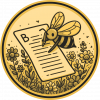
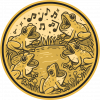










































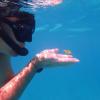



















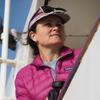








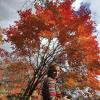
































Robin Sandfort commented on "Owl Sense Audio Recorders"